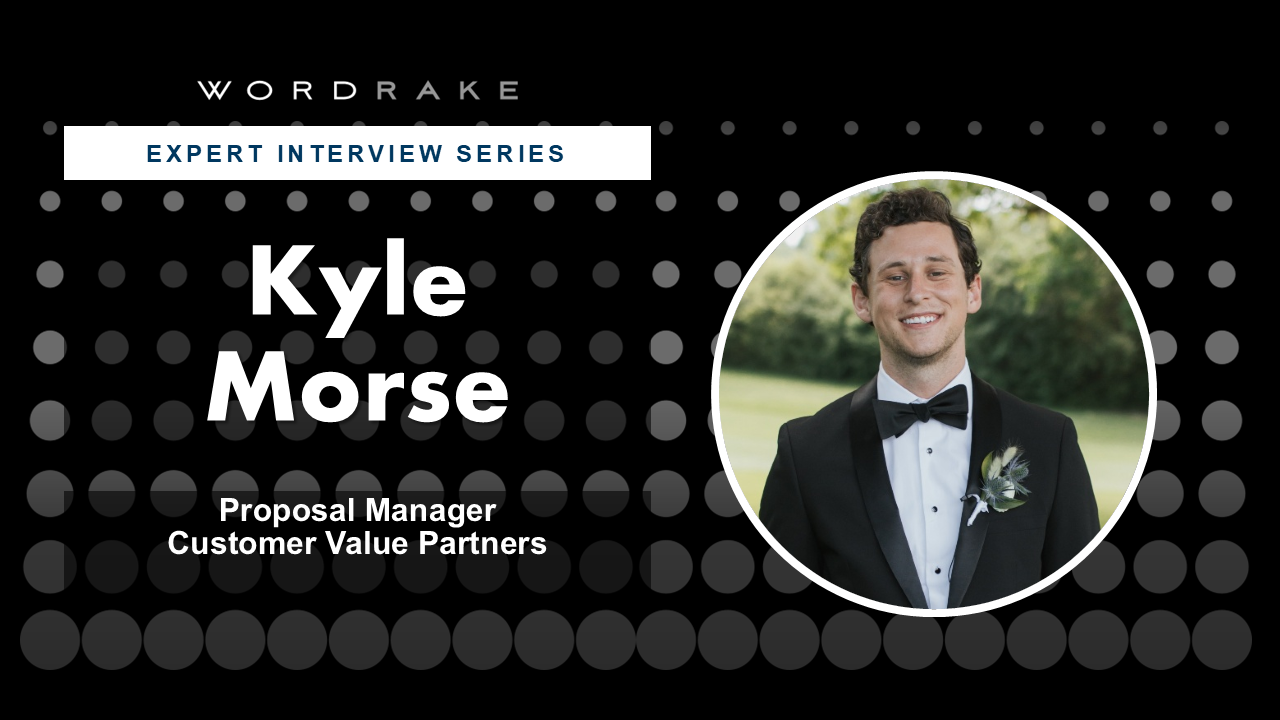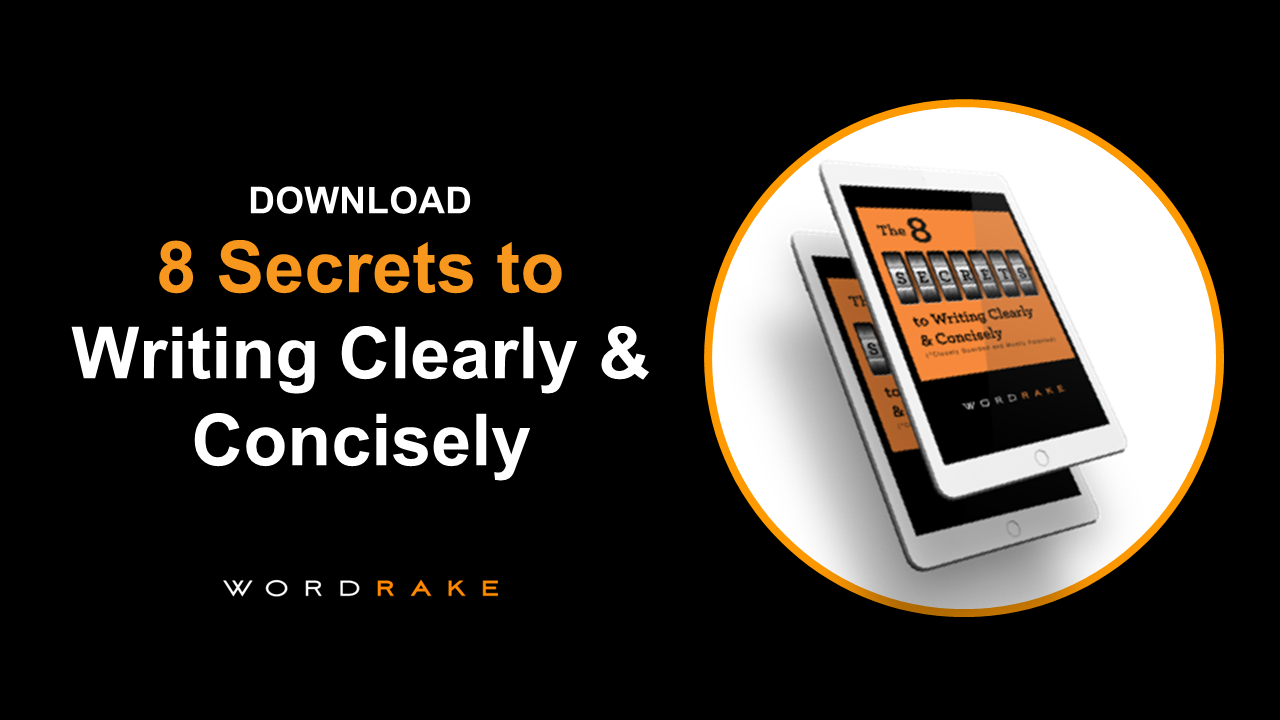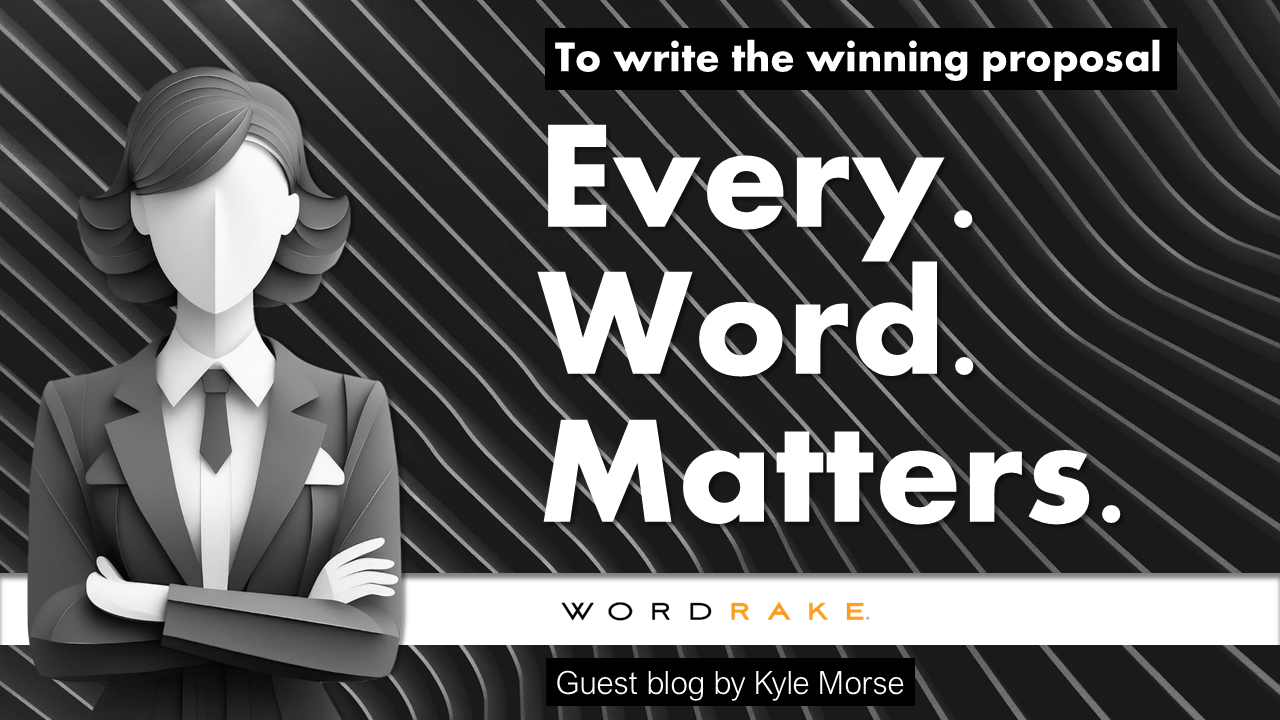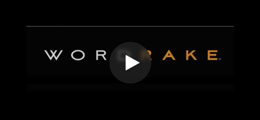What ever happened to those folks who graduated in 2020 anyway? How do you start a career when the whole world is closed? Kyle Morse did just that, landing a role as an editor for a healthcare consulting firm. He quickly found that the world had been lying about the "uselessness" of his English degree, and rose through the ranks to become a proposal manager. He shared with us what he does, and why great writing still matters.
What is your background and how did you get involved in government proposal writing?
In May 2020, during the peak of Covid, I graduated with a BA in English with an emphasis in Technical Communication and Information Design. The pandemic sharpened my angst about entering the workforce with a depreciating degree while a tech revolution loomed on the horizon. Washington, D.C. was a long way away from my Colorado home, and government contracting wasn’t even on my radar.
Fortunately, I caught the eye of an alumna during my senior capstone presentation. She invited me to interview with her company, a federal healthcare consulting firm, where I was brought on soon after as a fully remote editor. I mostly edited proposals, but also client deliverables—annual reports, social media, articles, press releases, you name it. We were eventually acquired by my current company, CVP, where I now work as a proposal manager. I’ve since realized this industry highly values good writers and naturally attracts them.
How did starting your career as an editor shape the way you think about writing today?
I’ve been forced to kill many darlings to preserve the Ediocratic oath of substance over style. I’m cold and hardened as a result; it can be a heavy weight to bear, but someone has to do it.
In seriousness, my foundation in editing was highly formative. This experience rewired my brain to see the act of writing through the reader’s eyes and instilled a hyper-vigilant mindset against “fluff.” In proposals specifically, the key danger with fluff is that it makes fitting tight space limits impossible. But, like an infection, it can spread to your readers and mutate your message. Brevity is the antidote.
I’ll confess that my experience as an editor has also made me slightly neurotic. I’ve been trained to sniff out all the misplaced commas and subtle grammar errors like a police dog. My wife would wearily attest that the nose doesn’t turn off outside of working hours.
What exactly does a Proposal Manager do?
If there’s a punchy, dinner-party-friendly way to describe proposal management, I’ve yet to hear it. But it can be boiled down to one oversimplified mission statement: Get a compliant, high-quality proposal submitted on time… no matter what. Thus, a good proposal manager can wear as many hats as the situation requires: writer, editor, architect, coordinator, compliance watchdog, paperwork wrangler, MS Word wizard, and plenty more.
Those unfamiliar with proposals are often surprised by the intensity and rigor involved. One bid I worked involved nine batches of Q&A releases, totaling nearly 8,000 individual contractor questions. On another, we were the prime contractor, responsible for coordination and logistics, on a team with over 60 partners.
When I’m not actively leading or developing a proposal, I’m archiving data, updating processes and procedures, integrating AI tools, or training team members. Every day brings new puzzles to solve—but that’s exactly what keeps it exciting.
What is proposal writing? How is it different from other business writing?
Proposal writing covers a broad spectrum. On one end lies the most complex and consequential of proposals—federal legislation, international trade deals, literal rocket science. A more everyday example could be as simple as sending a text proposing Chipotle for dinner. Context aside, every proposal follows the same North Star: frame your solution in a way that earns a yes.
This same binary (yes or no) outcome of proposals creates a unique pressure in how companies approach them. And as the stakes increase, so do the barriers to winning; you’ll have more competition to beat, increased evaluative scrutiny, and an exhaustive list of requirements and qualifications to satisfy. Another key distinction is the reactive nature of proposal writing. Procurements aren’t initiated on your terms, and are subject to someone else’s needs, rules, and timelines.
Proposal writing is often a delicate, high-stakes balancing act. That’s what makes winning one so sweet.
Who is the audience you are ultimately writing for? How does this influence your approach?
Before I write, I try to picture my audience—who they are, where they are, what they need, and how they absorb information. Imagine a still, peaceful reader sinking into a comfortable chair with a good book and a warm mug; the sound of rain and a crackling fireplace accentuate the aroma of fresh-baked bread.
Now picture the opposite of that. ‘Cozy’ doesn’t exist for proposal evaluators. They operate in a fast-paced, high-pressure environment while juggling evaluation criteria, financial implications, risk factors, competing bids, and more. Unlike our cozy fireside reader, proposal evaluators have no appetite for mystery or use for rhetorical bravado.
That’s not to say that they’re not human. The principles of storytelling and good information design are still essential tools in keeping your content engaging and readers invested. But ultimately they’re scoring, not savoring, and the best way to reflect that is through clear and concise writing.
Is there a specific structure or format to writing a proposal? How do you structure a proposal if there are no specific guidelines given about it?
Some solicitations have rigid requirements for every nook and cranny of your proposal. They’ll prescribe exactly what each section should address, in how many pages, and in what font. Creative freedom is limited in these cases, but it ultimately simplifies your response.
Other solicitations subscribe to the “Choose your own adventure” style. They’ll tell you what they want done, but not how to present your qualifications or solution. This freedom may seem enticing, but it also introduces ambiguity and widens the margin for error.
Most solicitations fall somewhere in the middle. But no matter how many blanks need to be filled in, starting with a structured, annotated outline is an essential first step for proposal writing. “Outlining” is where proposal managers earn their keep; it is a deceptively complex skill that took me years to master.
With finesse, structure becomes strategy, and a good outline becomes a roadmap to win.
Many solicitations have strict word or page limits. How do you keep yourself within those limits while still including all the important information?
Page limits are among the most persistent and pervasive challenges for proposal shops. They shape my approach from the initial outlining phase, where I’ll assign rough page allocations based on one guiding question: “What’s the least amount of pages we could use to write this section?”
Page allocations are helpful guardrails, but only go so far. As the draft matures, priorities shift and good ideas sprawl. Nuance and detail inevitably add weight to each page, forcing constant triage and tradeoffs. It becomes a daily battle to cut, compress, and consolidate, with each word standing trial to justify its value.
In proposals, fluff is the antithesis of substance. I’ll spare you from my rants about passive voice or throwaway words like “additionally.” Instead, I’ll offer one fundamental, yet oft-forgotten, truth: Writing more concise sentences means that you can write more sentences.
Simple in theory, but a powerful competitive advantage in practice.
What core skills do you rely on most to do your part in proposal operations?
Crisp, clear messaging brings structure to both the prose and the process. It ensures our final product, and the path to get there, is organized and efficient. With so many dependencies, contributors, and conflicting schedules, success hinges on synchronization.
I’ve learned the hard way how the laws of probability manifest in proposal operations. If your message can be misread or misinterpreted, it probably will be. Long, verbose emails are likely skimmed or skipped, leaving them highly susceptible to misinterpretation. That’s why I hold myself accountable to maintain a rhythm of clear, actionable communication across teams.
Every proposal constraint, from page limits to timelines, reinforces the need for disciplined communication. Writing this now, I realize how deeply engrained these principles have become. This interview offered a loose 50–150 word target per question. I took full advantage of my allotted space and used it deliberately; each response is precisely 150 words.
How does AI change things for professional proposal writers?
My biggest gripe is that it’s hijacked the em dash—long one of my favorite grammatical devices—and turned it into a red flag for AI-generated content. That aside, there’s no question about two things: 1) AI can be a powerful accelerator; and 2) it is here to stay.
Rather than resist, I’ve leaned into it and spent the last year finding practical ways to use it in proposal operations. By automating manual processes, I’ve helped save hundreds of hours across the company. For example, creating a glossary for a 50-page document used to take north of 4 hours. Now? 5 minutes.
But ultimately AI is just that: an accelerator, not a replacement. AI proposal platforms are popping up by the dozen, each justifying its expensive license by promising faster writing and higher win rates. As more companies flock to these platforms, standing out will become more important than ever.
About Kyle Morse
Kyle Morse is a proposal manager at CVP, a healthcare and next-gen technology consulting firm based out of Washington, D.C. Kyle started his career as an editor after graduating with a bachelor’s in English in 2020. His linguistic background and technical acumen lend well in the nuanced world of government contracting. He is a driving force in developing and integrating AI solutions for proposal production.
Check out his previous article: Federal Favor: How Concise Writing Wins Contracts Connect with him on LinkedIn








